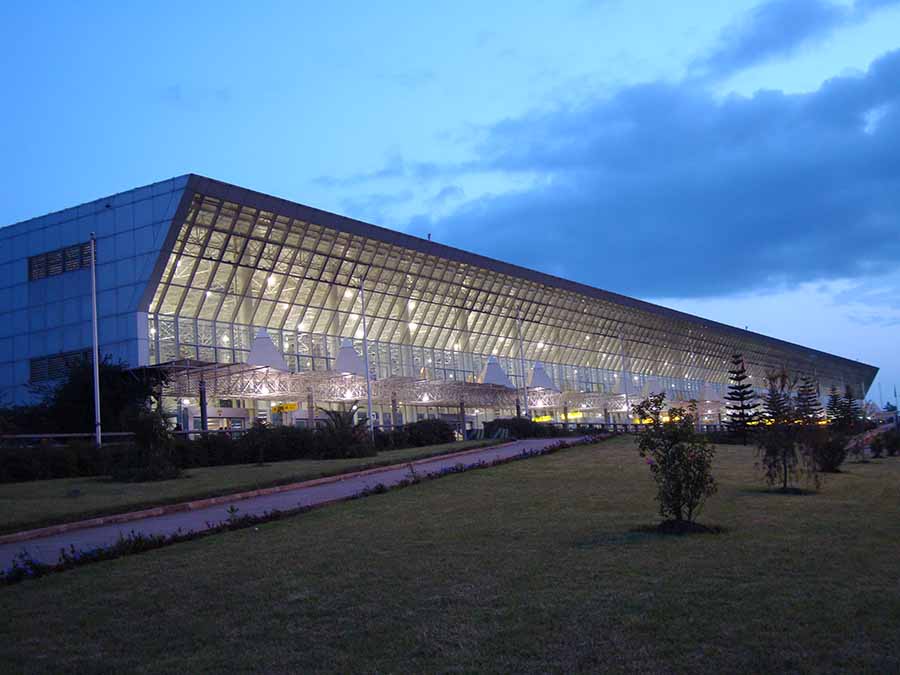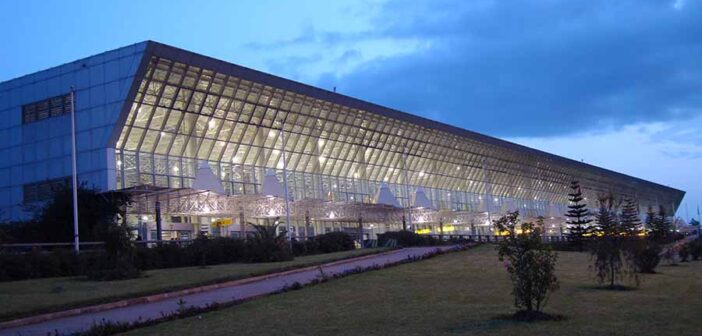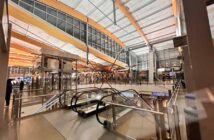
Addis Ababa Bole International Airport, Ethiopia’s primary aviation gateway and the main hub for Ethiopian Airlines, handles around 12 million passengers annually, making it one of Africa’s busiest airports. Located six kilometres southeast of Addis Ababa’s city centre in the Bole district, this airport serves as a key connection point for domestic and international travellers, with flights to over 120 destinations across Africa, Europe, Asia, and the Americas. The airport’s modern facilities and ongoing expansions ensure a functional experience for passengers navigating its terminals.
Accessing the airport is straightforward, with several transport options connecting it to the city. Taxis, available through ride-hailing apps like Ride, Bolt, or ZayRide, offer a 20–40 minute journey to the city centre, with fares typically negotiated upfront or metered at around 150–300 ETB (£2–5). Public buses and shared shuttles operate regularly, providing an affordable alternative, though schedules can be less predictable. For those driving, the airport features parking facilities with short- and long-stay options, including spaces for passengers with reduced mobility. The nearby Ethiopian Skylight Hotel and other accommodations, such as the Ramada by Wyndham, are reachable via a short taxi ride or free airport shuttles for select hotels. Road traffic, especially during peak hours, can extend travel time, so planning for extra buffer is wise.
The airport’s layout consists of two terminals: Terminal 1, recently refurbished, handles domestic and regional flights, while Terminal 2 serves all international flights. The terminals are connected by free shuttle buses running every 15–30 minutes on the landside, ensuring easy movement for passengers. Check-in counters, self-service kiosks, and baggage drop-off points are centrally located in both terminals, with clear signage guiding travellers to security, immigration, and gates. Terminal 2 features seven gates, while Terminal 1 has four contact gates and 10 remote gates, with moving walkways aiding navigation. However, gates 11–14 in Terminal 2 require additional security checks, including body scanners and disposal of liquids, which can slow progress if unprepared.
Dining options are limited but sufficient, with establishments like Cravings Restaurant & Bar offering international and local dishes such as injera and kitfo. Prices tend to be high, reflecting typical airport costs, and some travellers note a lack of variety. Retail includes duty-free shops with luxury brands, electronics, and local souvenirs like handicrafts and cultural clothing, alongside newsagents and bookshops. A small duty-free outlet in the baggage claim area and an EthioTelecom stall for SIM cards and data plans add convenience for arriving passengers.
Facilities cater to essential needs, with free Wi-Fi available via the “ADD Free WiFi” network, though connections can be slow and require a mobile number for registration. The Plaza Premium Lounge and Cloud Nine Lounge, both in Terminal 2, provide comfortable spaces with food, drinks, showers, and faster Wi-Fi for a fee or through memberships like Priority Pass. The Ethiopian Skylight In-Terminal Hotel, with 97 rooms and a restaurant, offers a restful option for transit passengers, bookable via email or at the airport’s transfer desk. Additional amenities include pharmacies, emergency clinics, currency exchange, ATMs, and information desks. Accessibility features, such as wheelchair assistance and porters, are available, though medical facilities are limited to basic stabilisation.
On-time performance is solid, with around 85% of flights departing on schedule and an average delay of 15 minutes. Ethiopian Airlines, the dominant carrier, often adjusts schedules to accommodate connections, reducing the risk of missed flights. However, potential delays can stem from inefficient security checks, particularly at peak times between 6:00–10:30 AM and 7:30 PM–2:00 AM, when terminals can become crowded. Staffing shortages at security and passport control, as well as occasional technical issues with equipment, may also cause bottlenecks. Travellers should arrive three hours early for international flights to account for these factors and check liquid restrictions to avoid delays at multiple security points.
Connections are efficient, especially for Ethiopian Airlines passengers, with minimum connection times of 30 minutes for domestic-to-domestic or international-to-international flights and one hour for mixed connections involving immigration. The airport’s transit services desk and clear signage help streamline transfers, though passengers on separate tickets or with non-Star Alliance carriers may need to collect and recheck luggage, requiring at least two hours.
Ethiopian Airlines offers a complimentary hotel stay for layovers of 8–24 hours on their flights, easing long transits. Those remaining in the international transit zone avoid visa requirements, enhancing convenience.Addis Ababa Bole International Airport provides a practical and functional travel experience, with accessible transport, a navigable layout, and adequate amenities to support passengers on their journeys through Ethiopia’s key aviation hub.
plans are underway by the Ethiopian Airlines Group to build a new, larger low altitude airport, Abusera International Airport, that will serve as Ethiopia’s new international gateway, quadrupling Bole International Airport’s capacity to serve 110 million passengers annually, with the first phase expected to be completed in 2029




